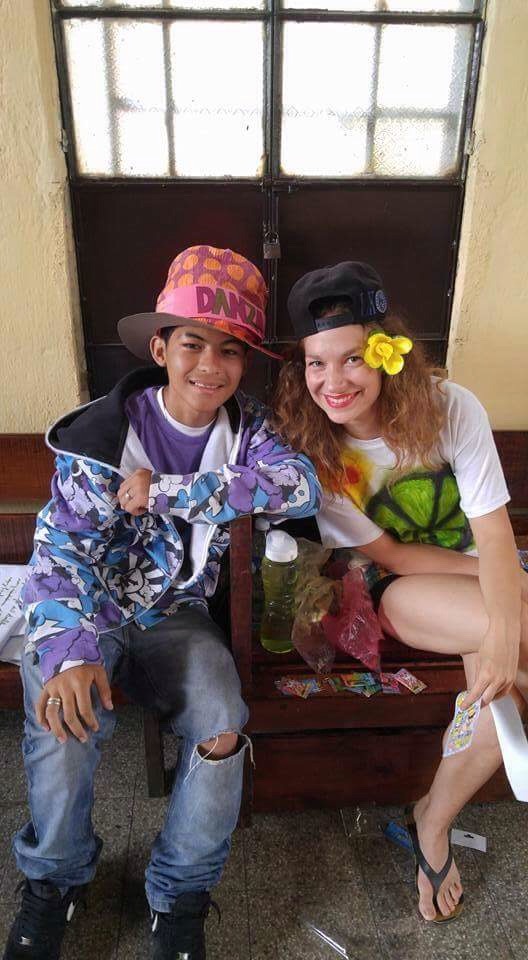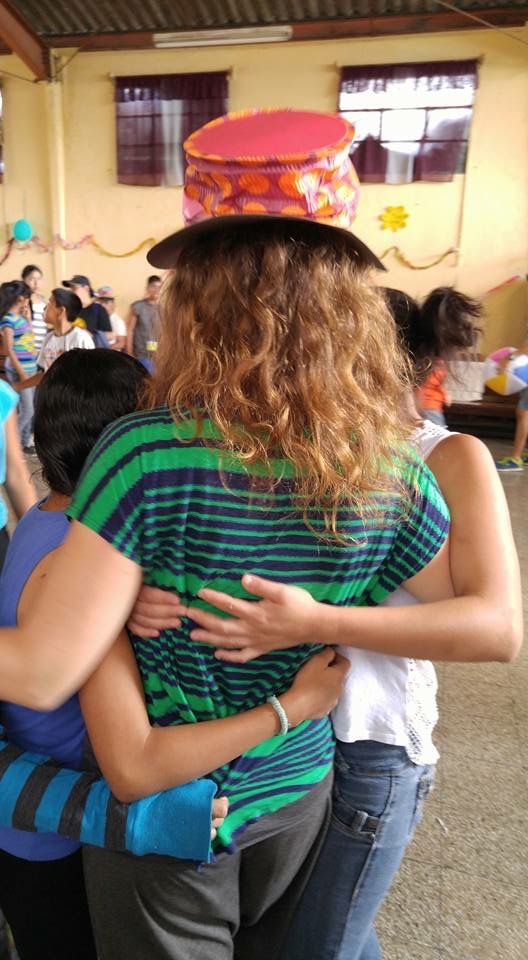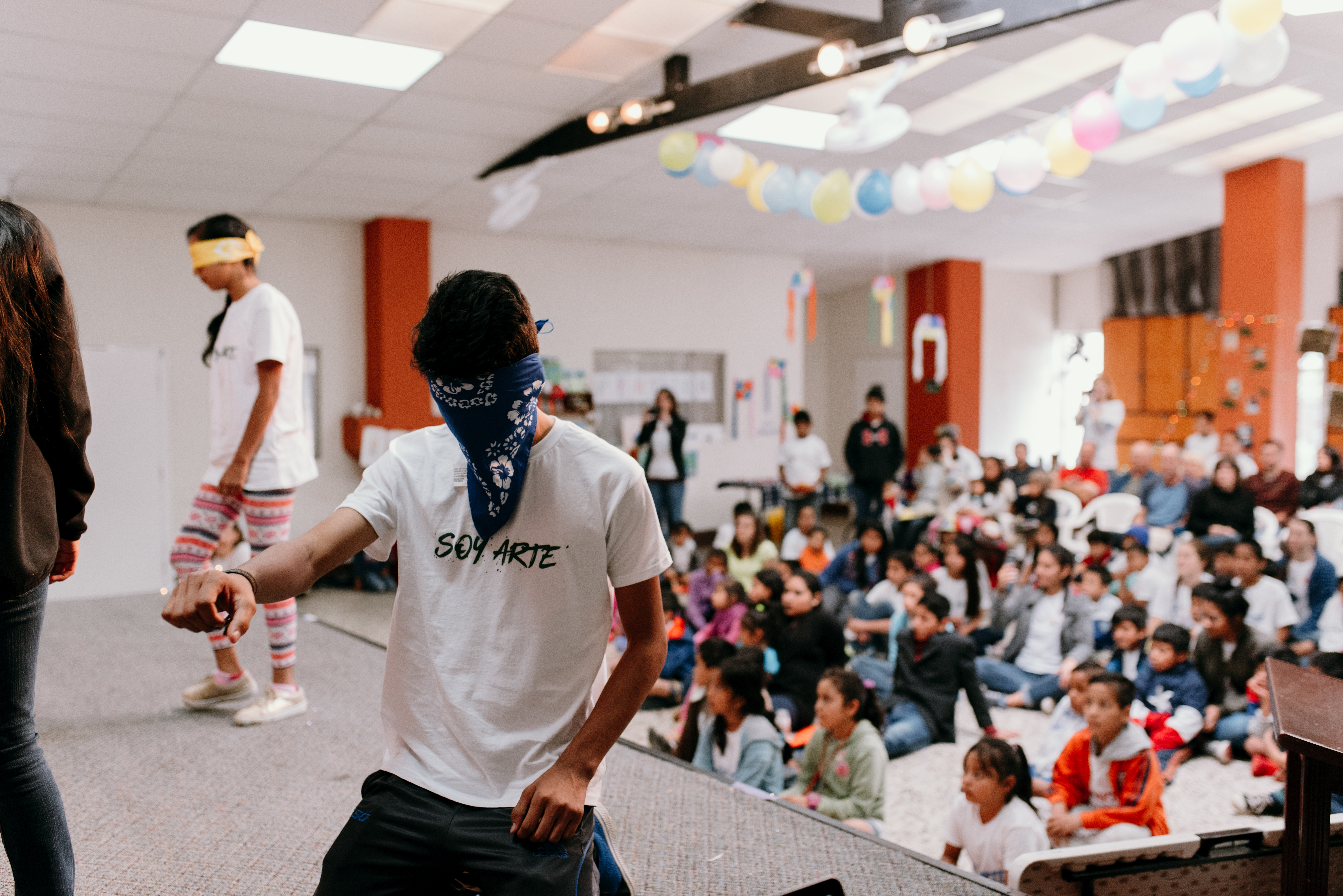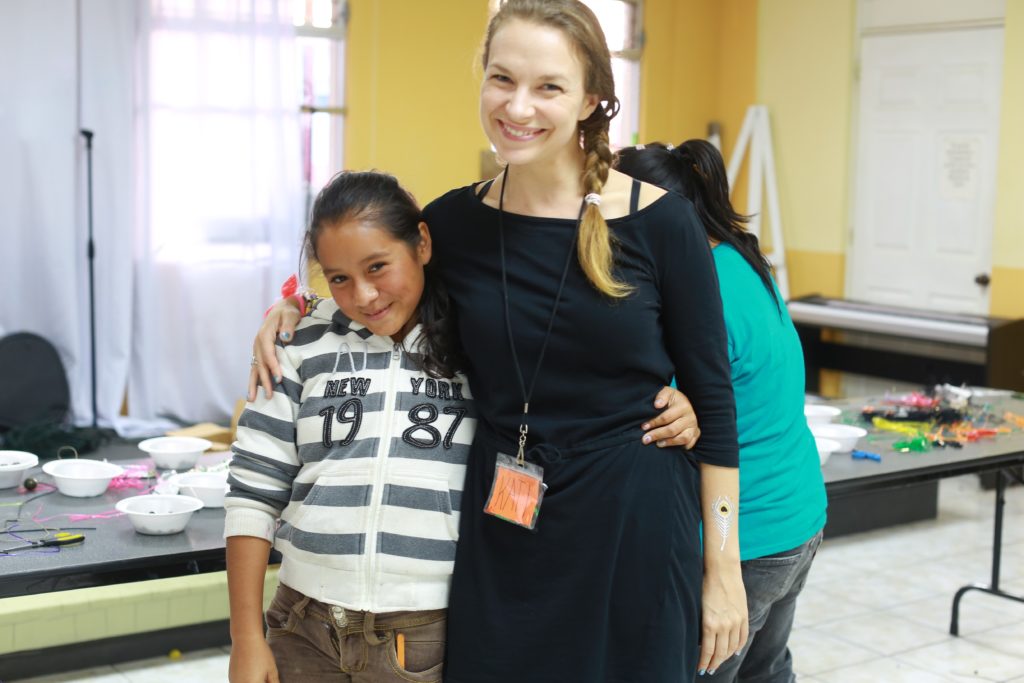Your Problem is Boredom
Athentikos team member Kati Korosuo asks herself some of the hard questions that traveling, volunteering, and mission work can bring up, and identifies Athentikos’ efforts to exist as an ethical organization in this sector. Kati is a dancer, choreographer, and artistic director from Finland, Europe.

I ended up going to Guatemala for the first time after a friend of mine had pushed me to go for about 13 years. It was June 2016 and I had just performed an astounding contemporary dance piece at the New York Live Art. I flew from having a drink at Manhattan to the biggest slum in Central America – the notorious La Limonada. Now when looking back I realize that trip became a turning point in my life. Probably that moment when our car left the slum for the last time and my fellow volunteer worker, a 60-year old Mr. Mural, asked me whether I plan on coming back. My answer came with heartache and tears: I don’t know.
I’ve travelled to about 30 different countries and surely seen plenty of things. Going to Guatemala was, however, the first time I was working with people who lived in such challenging circumstances. The ghetto of La Limonada is divided into different regions that are ruled by gangs. In these streets there are shootings weekly and funerals often. They say that the police don’t intervene because the gangs are better-armed. There are also lots of kids in La Limonada. That’s why Athentikos was hosting an I Am Art camp there. The kids came to the camp from different areas of the slum – from each other’s enemy territories. One of our goals was to enable the kids from rival territories to form friendships, thus stimulating change in the communities on a grass-root level, so that the violence in the area could diminish.
When it comes to my experiences working as a dance artist, teaching dance, and living as a human being, my time working in La Limonada has been one of the most meaningful experiences I’ve ever had. And that feeling, it’s a hooking feeling…. When returning to Finland, the culture shock hit strong. It felt difficult to get interested in things that we at western welfare states are privileged with, and can afford to get interested in. My culture shock didn’t settle until I booked a flight to go back to Guatemala.
During my second trip, the culture shock hit strong on the latin end. Things change constantly, and the difficulty and uncertainty about everything challenged my pedant character big time. I was trying to plan and execute an Artist-in-Residence pilot program for Athentikos, but nothing seemed to work. Finally, all I wanted was to go to the airport and wait for my return flight. I felt I couldn’t handle any more unpleasant surprises.
Back in Finland I appreciated the dullness of a gray November for a little while. However I soon felt that this was inevitable: Guatemala would become a part of my life. For my third trip in the fall of 2017, I knew what to expect, both good and bad… and that trip become the finest one so far: As I’m writing this, I’m in Guatemala yet again. It feels difficult to imagine a life without this work: these communities, people and experiences of meaningfulness.
This writing could well end here, but this is only the beginning. Make yourself comfortable.
This Guatemala-case coming into my life has led me into some serious contradictions, and each time I face more and more complicated questions. These questions deal obviously about flying, ecology and climate change and less obviously with post-colonialism and exoticism. I realized that many of the things that I perceived as beautiful or exotic in Guatemala were actually due to poverty. I became aware, or maybe just confused about, my motives to document life around me: how people lived, what they ate, and how they would dress themselves. Poverty tourism, exploitation – I became cautious.
Athentikos and its partners in Guatemala have some strategies to prevent exploitation. For example, taking pictures or video is prohibited both in the slums of La Limonada, and at Oasis, a center for sexually-abused girls. Athentikos’ protocols are there to eliminate misuse and maintain safety. In La Limonada it’s about my own safety: Having a camera visible there could soon make me person with no camera. In Oasis it’s about the girls’ safety: The center doesn’t want to risk revealing a young victim’s location to her abuser, for example through social media.While at Oasis, the girls’ legal processes are still unfinished and the criminals are still on free-foot. In some cases there criminals are their family members, some cases members of gangs, and some cases both.
I read a thesis by political science student Suvi Aarnio that say “Volunteer tourism is a growing sector in the tourist industry”. This news made me very excited, until I read a little further; “International volunteering can be seen as a negative, imperialistic, and paternalistic charity, which serves the prowess of the career and personal development of the Westerner” (Aarnio). These words really challenged me, especially in the midst of writing this article…Aarnio continues to explain the complications of volunteer tourism:

“There are not many better ways to thrust your own social status than to participate in volunteering in the global south. There are a lot of personal consumer goods on the market where consumers can express themselves, but few are so powerful to show the buyer’s generosity, world citizenship and adaptability, than volunteerism…A journey that has a good purpose invokes a Western post-materialist, guilty, and ethical consumer….” (Aarnio).
The critics of poverty tourism focus mainly on two aspects, according to Aarnio, those are “the voyeurism of the poor” and the “post-colonialist, selfish motives”.
So what about my motives then? Selfless motives could be seen in a willingness to help and do good. Selfish motives can be categorized by a willingness to learn and grow as a human being. I get caught here- I want to continue my work in Guatemala because it feels so meaningful to me. So what are the effects of the work, which I do through the medium of dance, for the Guatemalans?

I’ve worked here mainly with a dance technique called Dances to a Beat (DTB) which, next to its aesthetic and artistic contents, deals very directly with self esteem, body image and collectivity. This work feels important everywhere I teach it. And then – it has felt meaningful in a very specific way to teach at Oasis, where the girls would tell me that they had never thought anything good about their bodies before my workshop. That is quite astounding to hear. I can help in Finland as well, and there are many people who need this kind of help. Besides, I don’t even speak fluent Spanish. Surprisingly though, I’ve noticed a kind of ‘nobody is a prophet in their own land’ phenomenon. Some of the doors that I’ve been knocking in Finland for years opened to me in Guatemala very easily. But I can do volunteer work in Finland too: One of my recent favorites has been working as the artistic director of a contemporary dance festival of instant choreography.
Did I mention the adventure yet? It would be ridiculous to say that I don’t think it’s interesting to travel to Guatemala because it’s so, well, EXOTIC. These challenging places are also the most beautiful ones I’ve ever been to. Divine Volcanoes, delicious mangos, blossoming flowers, green valley, bright sunshine….
And yes, I caught myself from many cliches, too. For example, a feeling of superiority- that I would know better than the people in these places, like how they should practice religion, or how they should recycle. However, my global worries and conscious remarks don’t mean a lot here. What matters is how much patience I would have for a disruptive kid, or if I was being fair when we played soccer. The conservative religiousness that is mainly history in Finland is starting to feel natural here. In Guatemala, I realized that this is the context that I have to respect. For example, in Guatemala I’m not a vegetarian like I usually am at home; In Guatemala I eat what is offered to me. These things are not black and white, they are not easy, they are in constant dialogue and change.
After each of my trips to Guatemala, I didn’t know if I’d ever come back again. So what is the point of traveling to the other side of the world to connect with people, many of which I would never see again? Do these kids need another adult that will abandon them? Naturally so, every time I go, my time there makes more sense. Also, I remember many of my own meaningful teachers from early dance camps, whose impact to my life has been indelible – even if I never did see them again. I was reading Teemu Mäki’s (a Finnish author and theatre director) thesis “Darkness Visible” on these trips and I remember reading something like: “The biggest problem and threat for a western person is to get bored.” And that, as a matter of fact, is a severe threat. In Guatemala I feel that this threat does not reach me, since life is so present in every moment here.

That moment in the car, which I wrote in the beginning of this article, felt like a moment where everything in my life could change. At that moment however, I was rationalizing: It’s ok, I will return back to Finland where I can continue my comfortable life, and nothing needs to change. A realistic Kati, however, was talking to her heart: most likely some things will change, but a little. That little expresses itself slowly in practice, but most likely my heart has been changed due to these experiences in a way where there’s no way back.

Kati is currently preparing to make her fifth trip to Guatemala this fall to complete more I Am Art camps. There are still spots available for anyone who wants to join Athentikos in its mission to instill creativity as healing! Click here for registration information. If you cannot attend an I Am Art camp, please consider supporting Athentikos through a donation to help pay for camp supplies and operational costs.
